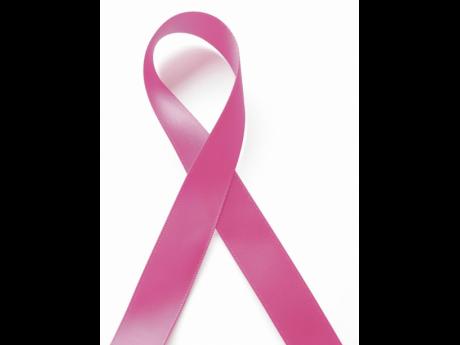Breast cancer in young women: Fasten your pink ribbon
YOU PROBABLY know someone who has battled or is battling breast cancer. Breast cancer is the uncontrolled growth of breast cells arising from the lobular glands that produce milk (lobular carcinoma) or the ducts that carry milk to the nipples (ductal carcinoma). Lobular carcinoma accounts for approximately 15 per cent of breast cancer cases while ductal carcinoma is responsible for about 85 per cent of breast cancer cases.
Breast cancer can be confined to the duct or lobules (in situ). However, over time in situ cancers can spread to surrounding breast tissue (invasive breast cancer), lymph nodes under the arms (regional metastasis), or to other areas of the body such as the lungs and bones (distant metastasis). Death from breast cancer is usually attributed to distant metastasis.
Breast cancer is the most common cancer affecting women worldwide and Jamaica is mirroring this global epidemic trend. Alarmingly, more than half of breast cancer cases in Jamaica occur in women between 25 and 59 years of age with no identifiable risk profile other than being a woman. According to the Centers for Disease Control and Prevention (CDC), over 1,000 women in the United States below the age of 40 die annually from breast cancer.
Breast cancer that is diagnosed at a young age (below 40 years old) may be more likely to spread and less responsive to treatment, leading to higher mortality rates. Routine mammogram is ineffective in younger women with dense breast tissue that hide tumours. Therefore, it is not recommended in women under 40 years of age. This makes breast cancer diagnosis in younger women challenging. In some instances, young women may ignore breast lumps due to the dangerous misconception that they are too young to have breast cancer which may result in late diagnosis and poor outcomes.
There is no way to predict who will get breast cancer, but there are factors that increase your risk at a younger age. If your mother or sister was previously diagnosed with breast or ovarian cancer, your risk for breast cancer is increased. Exposure to high energy ionising radiation such as chest radiation therapy at a young age may also increase your risk of breast cancer. Several studies have shown that increased alcohol consumption and oral contraceptive pills with high doses of oestrogen may be associated with breast cancer risk. Some women also have genetic mutations that predispose them to breast cancer.
SELF-BREAST EXAMINATION
– Given the lack of screening in women under 40, younger women are encouraged to do monthly self-breast examinations. Many women have used this method to detect breast cancer themselves. A self-breast examination is easy to perform and involves the following steps:
I. Visual inspection: Examine your breasts in the mirror with both hands up and down. Look for changes such as dimpling; puckering; bulging; redness; swelling and nipple that is pulling inward.
II. Manual inspection in a standing position: Examine your left breast by using your right hand and vice versa. In a circular motion, press on every area of the breast using light, medium and firm pressure with the pads of your three middle fingers. Feel for breast changes such as lumps and thick spots. The nipples should be squeezed to check for any leaking fluid. The armpit should also be checked for swelling.
III. Manual inspection while lying down: Your breast tissue spreads more evenly in a lying position; therefore, this must be a part of your routine self-examination. Place a pillow under your right shoulder and put your right arm behind your head. Use the left hand to press on every area of the breast using light, medium and firm pressure with the pads of your three middle fingers in a circular motion. Swap the pillow to the left side and check the other breast using your right arm. The nipples should be squeezed to check for leaking fluid and the armpit checked for swelling. If you find any lump or suspicious changes, contact your healthcare provider for further assessment. It is important that you stay calm, as some self-examination findings are not cancerous.
CAN YOU GET PREGNANT AFTER HAVING BREAST CANCER?
Pregnancy may be possible after breast cancer treatment. However, some treatments affect ovarian function which can make it harder to get pregnant. If you wish to become pregnant, speak to your healthcare provider before you commence breast cancer treatment.
It is important that women be “breast aware” by learning about warning signs and modifiable risk factors such as increased alcohol consumption and increased use of oral contraceptives. Limiting alcohol consumption is important for your breast health. If you have a strong family history of breast cancer you should communicate this to your healthcare provider so that a decision can be made about which method of contraception is right for you. The practice of routine self-breast examination is crucial as treatment is most successful following early detection. Early detection is key as you have a better chance of surviving if breast cancer is found early and has not spread.
Melisa Anderson Cross is a clinical chemistry lecturer in the College of Health Sciences at the University of Technology, Jamaica



